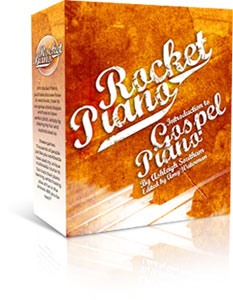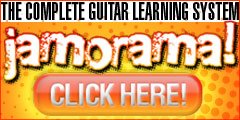In this article I want to give the readers a brief introduction to the many right hand techniques that guitarists employ. A player would be selling themselves terribly short if they stuck to only one of these techniques. Sadly, many players do just that. They are taught a certain way and they stick to it for the rest of their playing careers. Adding different right hand techniques will allow you to insert more harmonic and melodic ideas into your playing.
Alternate Picking: This is the most common right hand technique that guitarists today employ. In this technique the player used a plectrum to strike the guitar strings in an alternating up/down/up/down fashion. No matter which string is to be struck next the pattern is always up/down/up/down. The reason that this is such a popular way to pick is because it is so effective. Alternate picking allows the player to have a good rhythmic foundation in their right hand and it allows a lot of freedom of movement over one, two, or more strings. Alternate picking is used in almost all styles of music but it is very prevalent in blue grass and shred metal guitar.
Sweep Picking: Sweep picking is another style of picking that uses a plectrum. In this right hand technique, the player sweeps the picks across the strings in either an upward or a downward motion. This is an extremely efficient way of picking and a flurry of fast notes can be played. This technique is commonly used when playing arpeggios. This right hand technique is very common in neo-classical shred guitar.
Finger Picking: Finger picking is a school of its own in the guitar world. Many guitarists are never taught to use a plectrum but are taught to play exclusively with their fingers. The benefits of finger picking are many. The player can play fast repetitive phrases much faster and more accurately than a plectrum player. Also, finger picking players have much more freedom to mix both harmonic and melodic ideas than plectrum players. Finger picking is the style used most often in classical guitar. Many jazz players will use finger picking as well, especially when comping.
Hybrid Picking: Hybrid picking combines elements of both plectrum playing and finger style playing. In this style, the guitarist hold the pick between his or her thumb and index finger and the other three finger float above the strings and pick the notes. This is a very popular style of picking in jazz where the guitarists must shift frequently back and forth between harmonic and melodic playing.
I hope that my introduction to guitar techniques for the right hand was helpful. I encourage all beginning guitarists to experiment as much as possible with each of these techniques. Your guitar playing will only improve!
My name is Ryan Gloman and I have a passion for guitar and a passion for sharing information. I hope that this article helps you on your way to becoming a great guitarist. I understand that learning to play the guitar can be a daunting task at times. Luckily, you can find tons of helpful info on the net. Check out this site for some great tools.
Alternate Picking: This is the most common right hand technique that guitarists today employ. In this technique the player used a plectrum to strike the guitar strings in an alternating up/down/up/down fashion. No matter which string is to be struck next the pattern is always up/down/up/down. The reason that this is such a popular way to pick is because it is so effective. Alternate picking allows the player to have a good rhythmic foundation in their right hand and it allows a lot of freedom of movement over one, two, or more strings. Alternate picking is used in almost all styles of music but it is very prevalent in blue grass and shred metal guitar.
Sweep Picking: Sweep picking is another style of picking that uses a plectrum. In this right hand technique, the player sweeps the picks across the strings in either an upward or a downward motion. This is an extremely efficient way of picking and a flurry of fast notes can be played. This technique is commonly used when playing arpeggios. This right hand technique is very common in neo-classical shred guitar.
Finger Picking: Finger picking is a school of its own in the guitar world. Many guitarists are never taught to use a plectrum but are taught to play exclusively with their fingers. The benefits of finger picking are many. The player can play fast repetitive phrases much faster and more accurately than a plectrum player. Also, finger picking players have much more freedom to mix both harmonic and melodic ideas than plectrum players. Finger picking is the style used most often in classical guitar. Many jazz players will use finger picking as well, especially when comping.
Hybrid Picking: Hybrid picking combines elements of both plectrum playing and finger style playing. In this style, the guitarist hold the pick between his or her thumb and index finger and the other three finger float above the strings and pick the notes. This is a very popular style of picking in jazz where the guitarists must shift frequently back and forth between harmonic and melodic playing.
I hope that my introduction to guitar techniques for the right hand was helpful. I encourage all beginning guitarists to experiment as much as possible with each of these techniques. Your guitar playing will only improve!





